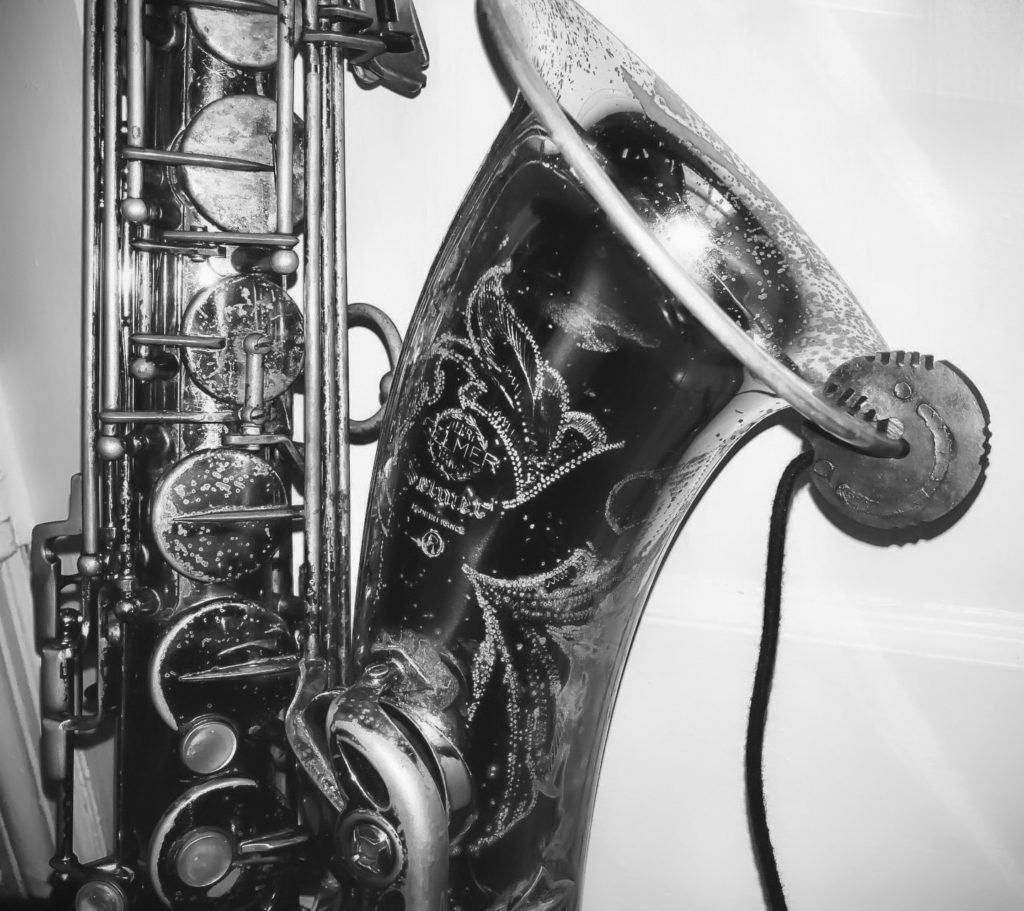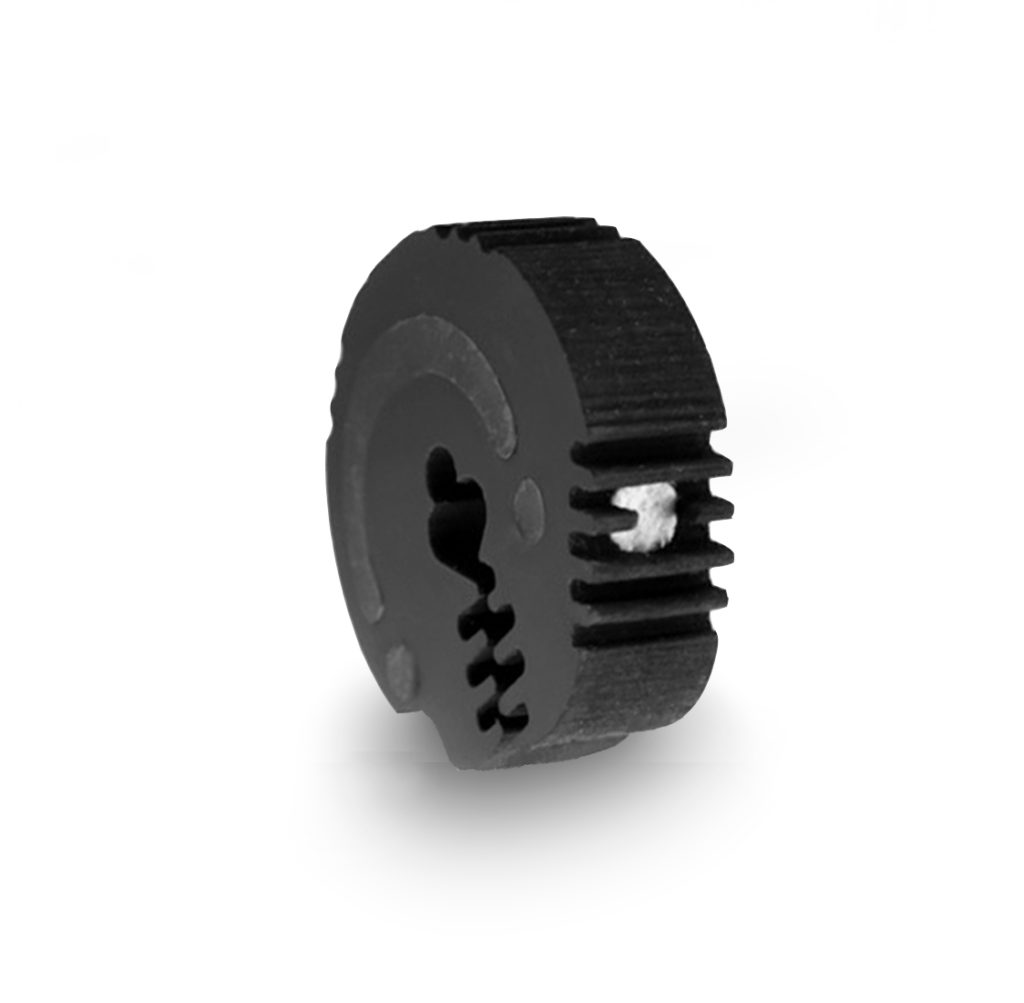The GROVER NOTTING Band® Reference Album
Recording the Saxophone Section
Article by Frank Hinton. Read more on Frank Hinton’s profile page
Introduction and Purpose
A rare gathering of first call musicians, The Grover Notting Band bring vast experience, unique skills and diverse potential to an imposing ensemble. The band is preparing to record a reference album of original cross genre music, for multiple research stream evaluation, and consequent international release.
The band of twelve includes four saxophone players, Greg Clarkson, John Mackey, Carl Mackey and Frank Hinton, and this paper will examine the technology and techniques proposed to record them. By choice and necessity, the album will embrace the real world from start to finish, to realise the most authentic and engaging outcome. Therefore, and given the manner in which a saxophone radiates sonic energy, recording them will require a considered approach, deft engineering and the most complementary technology available, to achieve a wide, smooth and flat frequency response. The recordings engineering responsibilities, are in the eminently capable and experienced hands of Ross A’hern, and our microphone solution, the REMIC W3000-G1 brass and woodwind system, with remote ambient microphones to be determined.
Note: This paper is presented in two parts. 1) Pre-recording; the preparatory stage, authored by Frank Hinton, founded on established information, his experience as a musician, and extensive research, particularly that which he undertook in the development of the Grover Notting critical listening platform. 2) Post-recording; the outcome, authored by senior engineer Ross A’hern and the musicians. Let’s begin.
Setting the Scene
The Origins and Human Experience of Sound
The term sound is a commonly used to describe waves of pressure variations in the air around us, which is then sensed or measured by our ears or microphones. Evolutionary development of our auditory system primarily developed for detection of predators and communication. Musical sounds can be distinguished from other sounds (communication, predators, noise) by certain characteristics that are abstract and particularly human in origin. These include pitch, harmonic composition (often referred to as colour), transient behaviour or rhythm, and volume or amplitude. In fact, inclusion of the harmonic series is probably the most significant feature that distinguishes or identifies music from other sounds.
These pressure variations produced by musical instruments can be measured by microphones and converted to voltage waveforms, which can be modified, transmitted, amplified, stored, and ultimately converted back into pressure waveforms by a loudspeaker for listening or re-listening.
Whilst not essential, there are a number of vital elements that contribute to the integrity, quality and satisfying experience of reproduced musical sounds, these include Imaging, Balance and Reverberation, without which, the representation of the musical event would be flat and lifeless. The further the reproduction strays from the reality of a purely acoustic performance, the less engagement of the listener.
Sound travels through air and solid structures (in particular low frequencies), to be perceived by the brain and body (if loud enough). The combination of our senses of hearing and feeling (touch) combine to create an individual perception in our minds. While our hearing can sense pressure variations from 20Hz-20kHz, our feeling can extend below that range, whilst human perceptive capability can experience above 20kHz, which has been shown in our research to contribute animation and atmosphere that enhances the sense of reality.
Given the beauty and magnitude of energy produced by the musician and their instrument, including the saxophone, it is our mission in this project to faithfully capture all available information, unaltered and without colouration, to realise the most authentic, engaging and compelling outcome.
Capturing the Essence of the Saxophone
Recording Practices and Challenges to Date
Since its creation by Belgian inventor and musician Adolphe Sax in the early 1840’s and patented in 1846, there have been at least 14 variations of the instrument, primarily based on pitch, from extremely high, to exceptionally low, and many keys in-between. The Grover Notting Band saxophone section will centre around the tenor, but will also feature soprano, alto and baritone, the four most popular and recognisable members of the family today.
The saxophones primary source of energy radiates from its bell. However, energy also radiates from the 25 tone holes located along the length and breadth of its body, which contribute to the overall timbral characteristics of the saxophone family, and that which is experienced acoustically. Over the course of recording and live reinforcement history, saxophone players have used various devices, a) to be amplified in live entertainment environments, and b) to transfer their recorded performances for storage on analogue tape or in a digital audio workstation file. These include technological, slang or generalised descriptors such as, bug, pick-up, contact, piezoelectric (crystal), and remote dynamic, ribbon or condenser microphones.
However, most saxophone musicians are rarely, if ever, completely satisfied with what they hear on playback of their performance. There would be a number of reasons for this, from environmental to psychological influences, but also compromised technology and placement technique or a lack of understanding, that will inevitably alter and colour the instruments timbral characteristics and the musician’s sonic signature.
Note: In contemporary culture, convenience frequently seems to prevail over commitment to the highest possible standards, which is the goal of our project. Often the most minute detail can be overlooked as unimportant in itself. However, let’s not lose sight of the fact, attention to detail, regardless of how minute, and the consequent sum of many one percent influences, is invariably the difference between an okay or excellent outcome, and it is excellence that delivers the memorable and exhilarating experiences, not to mention the establishment of reputations.
Getting to Know REMIC MICROPHONES
Validating the Technology
Akin to much audio technology today, most microphones are derivative of each other, and commonly deploy, or are direct clones of historical designs, perpetuating compromises such as colouration. Not so REMIC, the Danish producer of instrument specific microphones for the traditional string family, piano, and brass & woodwind. REMIC technology was born of a twenty year ‘first principle’ development process, where the subject instrument was in fact ‘the reference point’. A foundational pursuit was to consider and understand specific instrument sonic energy dissipation characteristics, to create a technology that would capture all emanation at the very source, for example the soundboard of a piano.


Upper left photo: REMIC W3000 G1 brass microphone mounted on a saxophone. Upper right photo: REMIC W3000 G1 brass microphone close up. Photo of the saxophone by REMIC artist Matthew Alec.
REMIC is neither a bug, pick-up, contact, piezoelectric nor a dynamic, ribbon or remote condenser system. The technology is best described as a Proximity Field Microphone (PFM), founded on vector-based pressure gradient principles, deploying a high-definition pre-polarized direct balanced condenser element, therefore, requiring 48 volts of phantom power. Each microphone type includes a specific mounting apparatus to achieve optimum, close and stable placement on the instrument.
Note: A musical note to a musician, is a frequency to an audio engineer, and consists of vibrations that occur from a few to many thousands of cycles per second, measured in Hz and kHz. Whilst we can’t hear, we can feel as low as 3-7Hz. These are the frequencies that can send us to sleep at the wheel of a car, due the vibrations that travel from the road through to the driver’s seat. At the other extreme, whilst we can’t hear, we can perceive frequencies beyond 20kHz. These frequencies contain information such as overtones, harmonics and transients. All vibrations emanating from the source, quickly dissipate at differing speed and complexity. Therefore, to replicate the acoustic and authentic experience of an instrument such as a saxophone, all available energy should be faithfully captured on, or very close to the source, and this conclusively validates the REMIC approach.
Summarizing Our Choice
The REMIC W3000-G1
The REMIC W3000-G1 was chosen as the principal capture microphone for the four-piece saxophone section based on the technological principles shared in the aforementioned narrative, along with individual testing by the four musicians who successfully experimented with alto, tenor and the more challenging soprano and baritone saxophone. However, our first listening experience of the W3000-G1 were files recorded by Ross A’hern some time ago, and these proved to be quite a revelation to the musicians and engineers who shared the information. Once the recording space and set-up is experienced in real-time, decisions will be finalized on the placement of complementary remote microphones to capture both peripheral information and environmental ambience. We look forward to sharing the outcome in Part Two, but for now all that remains to be said “the REMIC W3000-G1 is everything it promises to be and some”.
In the gift of music, let’s keep striving for the mystery and the magic.
Frank Hinton
Background Facts
Who is Ross A’Hern?
For many years, Ross was head of Sony Music Studios Australia, before establishing his own facility and freelance enterprise, building on an enviable music recording and mix engineering reputation developed over many decades across all classical, jazz and contemporary genre’s.
What is Grover Notting?
Founded on ‘first principle’ design parameters, Grover Notting is a comprehensive leading edge critical listening platform researched, designed and manufactured in Australia, deploying applied physics in its creation. The brand designs and produces technology in two streams, acoustics and companion drive electronics, all in-house. Producing systems and devices for both Principal and Cross Reference applications, the innate Grover Notting linearity characteristic across the range, finds favor in all production environments from recording, mixing and mastering of all music genre’s to film mixing and broadcast. It is also successfully deployed in test laboratory, forensic and audio restoration facilities and enjoyed by the audiophile sector.
Grover Notting has earned a significant reputation and market share in Australia, with a small worldwide patronage supplied, serviced and supported directly. This will change as the brand and its technology endeavor to move closer to an international client base in the not-to-distant-future. Further developments will see the company establish a music production division, an outcome of the exceptional interest in the formation of the Grover Notting band, its capability, potential and first offering, the Reference Album titled ‘Let’s Begin’, and further original content now underway
What is the Grover Notting Reference Album?
The Grover Notting Reference Album was conceived to research the impact of various sample rates, clock technologies and platforms (stereo and 5.1 etcetera). An album of original music has been written and arranged and due the precise nature of recording simultaneously, no processing was possible, it also had to be recorded live to achieve accurate comparison material. This required the most skillful and experienced musicians, a Supergroup. By its very nature, the album will also be extremely engaging to the music loving public and as an audiophile reference. Therefore once the research files are completed, they will be mixed and mastered for international release and the Grover Notting band will enter the music lexicon.

